Viburnum dentatum
(Arrowwood)
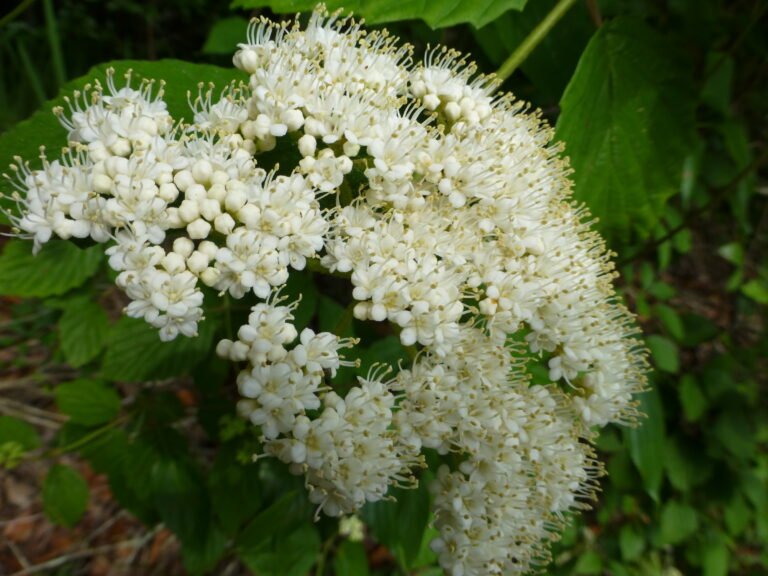
Common Names, Latin Name and Family
Its common names include arrowwood, southern arrowwood, arrowwood viburnum, and roughish arrowwood.
Its Latin name is Viburnum dentatum.
It is in the Viburnaceae, or viburnum, family.
Form
Viburnum dentatum is a deciduous shrub.
It has a multi-trunked habit, similar to wax myrtle, and attains a mature height of 9 to 12 feet.
It will generally produce suckers that will eventually spread to form a thicket.
Leaves
Arrowwood leaves are opposite, simple, and ovate with the occasional lance shaped leaf.
They are generally 2 – 3 inches wide and 3 – 4 inches long. The leaf margins are dentate, or toothed, and the tips of the teeth may be sharply pointed or blunt.
The leaves have distinctive lateral leaf veins and the upper and lower surfaces of the leaves have a rough surface.
The leaves may turn yellow, orange or purple in the fall.
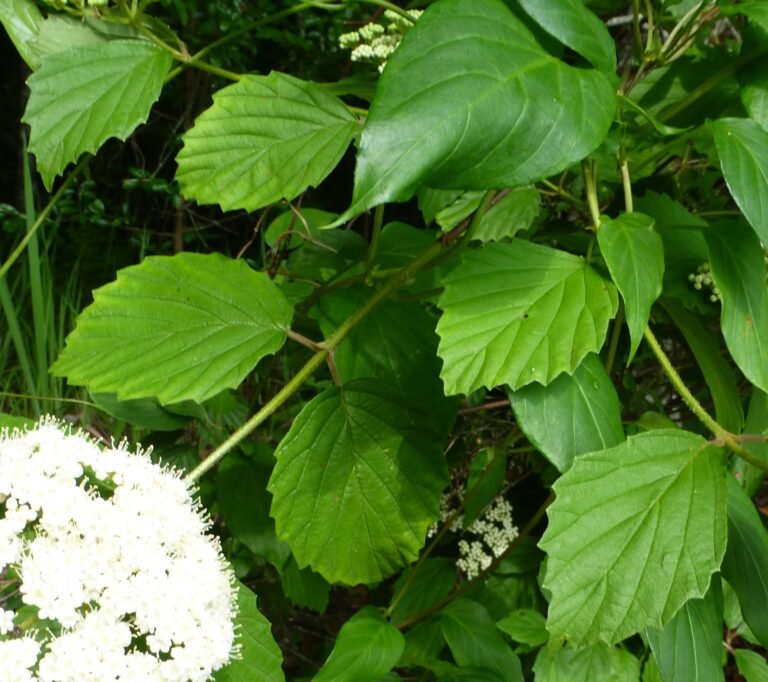
Flowers
Round topped clusters of small white flowers appear in the late spring – mid-May to early June in Central Florida.
The individual flowers have five petals with five protruding stamens.
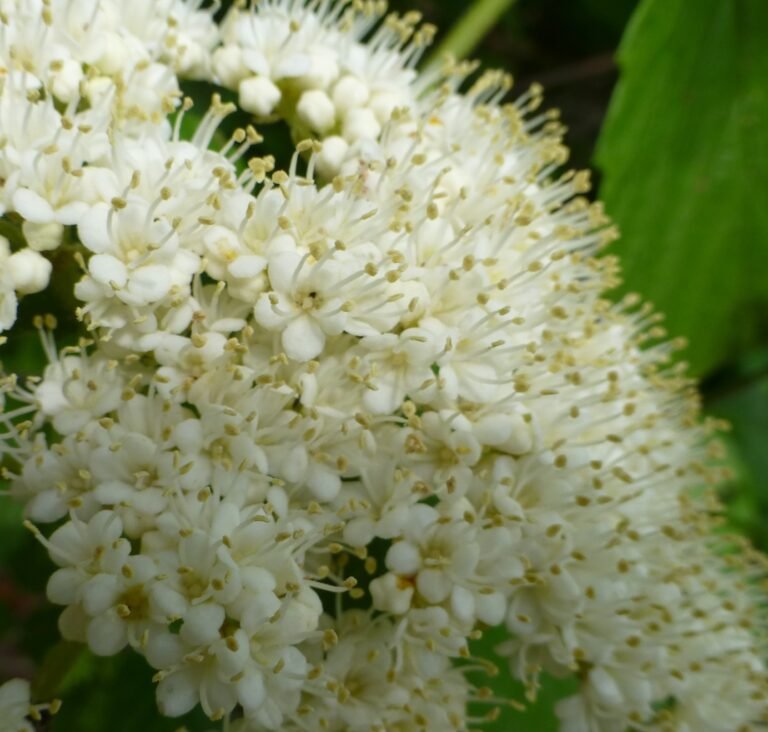
Fruit
Arrowwood produces lots of fruit and each berry contains one seed.
It is green when immature and turns to blue-black at maturity, which generally occurs in the summer.
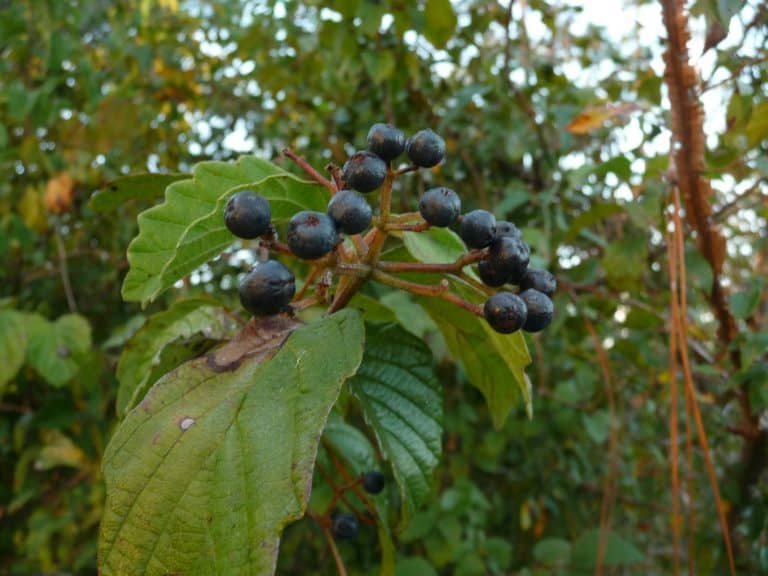
Habitat
Arrowwood grows in a variety of habitats including poorly drained riverine areas, stream banks, and bogs, as well as drier, well drained, upland woodlands and pine flatwoods. .
Native Range
Viburnum dentatum occurs in Florida from Hernando County northward to southwest Georgia, and westward to eastern Texas
Landscape Use
Arrowwood’s ability to grow in a wide variety of habitats make it an excellent choice for the home landscape. Not only is it very adaptable, it also provides showy spring blooms, beautiful summer fruit, attractive fall color and food (and cover) for wildlife.
Arrowwood can be planted in the home landscape in masses, hedges, borders, or as individual specimens. Arrowwood grows best in part-shade with ample moisture until it is established.
It generally does not require watering once it is established unless it is located in the full sun then it may become stressed during periods of drought unless it is located in a moist area. Pruning is not necessary in order to maintain dense growth.
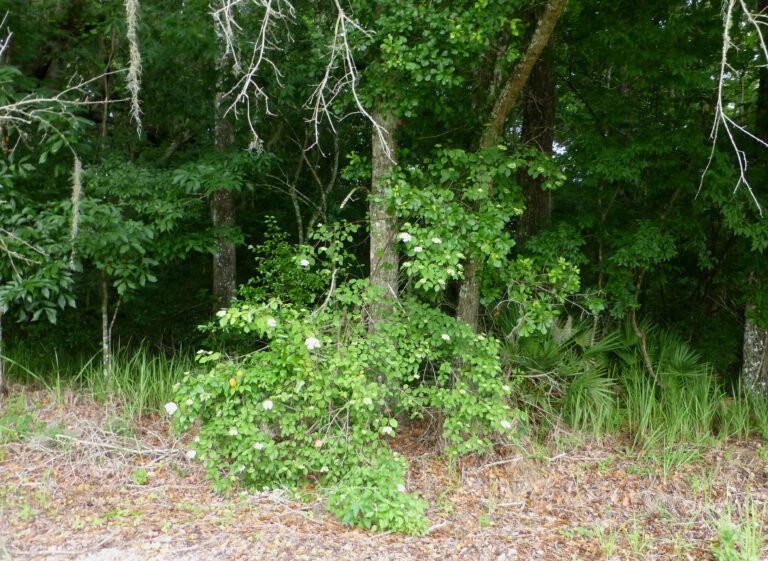
Wildlife Use
The flowers provide a nectar source for many different insects including bees and wasps.
The berries are consumed by a variety of wildlife including songbirds, game birds, and mammals.
It also provides nesting habitat for songbirds and hiding places for wildlife and forage in.
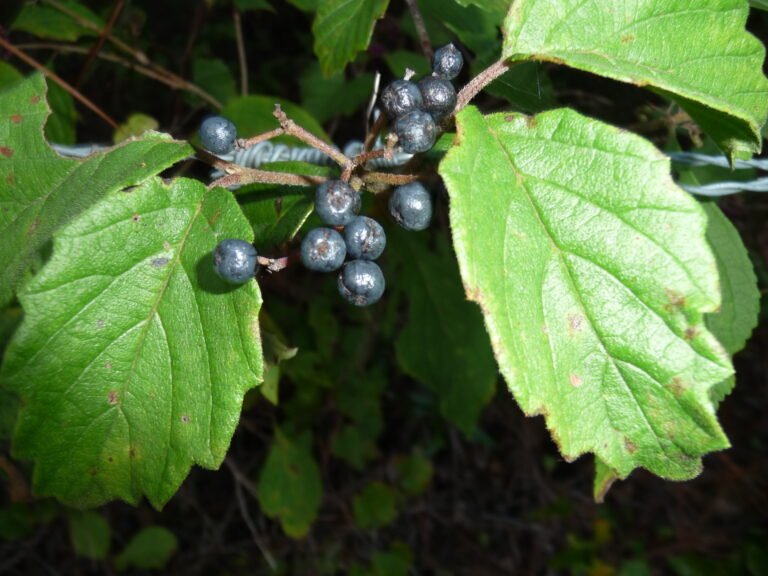
Propagation
The easiest form of propagation is by the use of cuttings because the seeds take as long as three years to germinate.
Four to six inch semi-hardwood cuttings taken in the fall will produce the best results because the mature portion of the stem contains adequately stored food reserves which help to manufacture new roots.
Root cuttings may also be obtained if there are suckers at the base of the plant.
Arrowwood can be transplanted if most of the leaves are trimmed off, as well as the flowers, and it is kept moist until it becomes established.
Next Article: Beautyberry
